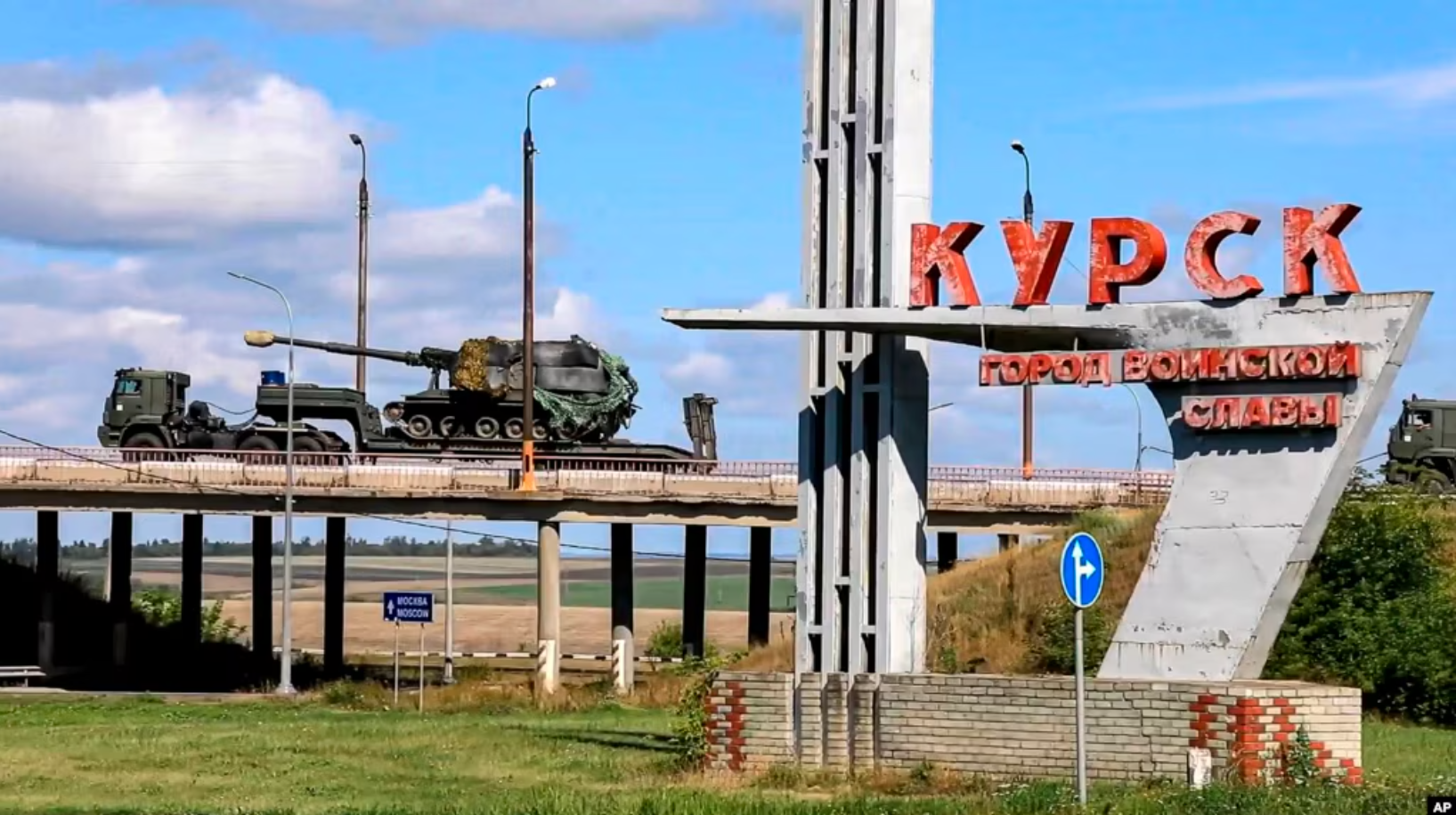Kursk is under massive attack by unknown drones – not that they are Ukrainian
17 April 10:42
On the night of Tuesday, April 15, the Russian side reported a large-scale drone attack on Kursk. According to their claims, as a result, fires broke out in several high-rise buildings, and there were deaths and injuries.
The information was released by the operational headquarters of the Kursk region.
The reports state that the attack resulted in the fire engulfing the upper floors of several buildings. In particular, on Zavodskaya Street, the fire affected the 8th and 9th floors of one of the buildings, which were extinguished by the Ministry of Emergency Situations. The residents were evacuated. Similar fires, according to them, also occurred in a building on Orlovska Street – on five floors at once, as well as on one of the floors of a building on Vespremska Street.
In addition, Russian sources reported the death of an 85-year-old woman and nine victims with wounds from shrapnel, head injuries, and burns.
According to the Russian Ministry of Defense, cited by the RIA Novosti propaganda agency, 115 drones were allegedly shot down by air defense systems overnight. Of these, 109 were over the Kursk region, three over the Voronezh region, and one each over the Moscow, Bryansk, and Orel regions.
“As a result, everything was “intercepted” in such a way that civilian infrastructure was affected – in fact, to cover military facilities. At the same time, there are signs of precise hits on industrial zones, which were obviously not covered by air defense,” said Petro Andriushchenko, former advisor to the mayor of Mariupol and head of the Center for Occupation Studies.
According to him, official details are expected from the defense forces.
Serhiy Bratchuk, spokesman for the Ukrainian Volunteer Army, noted that Russian telegram channels reported air defense activity and explosions.
“In addition, information about the use of electronic warfare (EW) and the fall of drones on residential buildings appears on the network. But it definitely ‘flew’ to the mercenaries’ base,” added Bratchuk with irony.
In his turn, Sergiy Sternenko expressed the opinion that the damage to residential buildings was the result of Russian air defense.
When, under what conditions can such attacks on the territory of Russia increase and how bad is the situation with Russian air defense?
Russia’s air defense suffered losses and weaknesses
Aviation expert Anatoly Khrapchinsky in an exclusive commentary for
According to Khrapchynsky, a significant part of Russian air defense systems has been redeployed to the temporarily occupied territories of Ukraine, in particular to Crimea and the southern regions.
“We believe that, in fact, large numbers of air defense systems have been redeployed to the temporarily occupied territory of Ukraine. This includes both the temporarily occupied Crimea and the rest of the land part of Ukraine,” the expert noted.
He also added that during the full-scale invasion, Russia’s air defense resources have significantly decreased.
Strikes on industrial zones: Khalyno is one of the priorities
According to Khrapchynsky, Ukrainian forces are hitting industrial zones where important military infrastructure is located. Particular attention is being paid to the Khalyno airfield in Kursk region, from which attacks on Ukrainian territory are being launched.
“Khalyno is an airfield where tactical aviation is based, which daily attacks Ukraine with KABs and other means of destruction. It is also a logistics hub that is important for the Moscow direction. In addition, its destruction reduces the threat to Sumy region,” explained Khrapchynskyi.
He emphasized that most technology parks in Russia are currently involved in arms production. Some of them are even based at closed civilian airports.
“Most technology parks in Russia are now working on weapons production. Some airfields and terminals of civilian airports have been converted to produce drones and other military equipment,” the expert emphasized.
That is why, according to him, these objects are priority targets for destruction.
Russia is sacrificing civilian infrastructure for military targets
The expert also noted that in an attempt to cover its military infrastructure, Russia often damages its own civilian facilities.
“We see that in an attempt to protect its military facilities, Russia does not disregard security measures, and there are hits to residential buildings,” Khrapchynsky said.
Regarding future prospects, Khrapchynskyi emphasizes that Ukraine has the potential to increase the production of its own weapons, including drones, but needs funding.
“Our producers are ready to increase the number of products, but this requires proper funding. For example, opening exports or support through international programs such as the Tang formula, the Italian model, or the British drone coalition can make a significant difference,” Khrapchynskyi said.
According to him, investment in the development of new technologies (R&D) will allow Ukraine to respond more effectively to threats and strike deep behind enemy lines.
Thus, the large-scale drone attack on Kursk is not only another indication of the high vulnerability of Russian air defense, but also a reminder of the serious problems Russia faces in the face of a full-scale invasion.
Despite the fact that Russian air defense is able to shoot down most attacks, some drones still reach their targets, causing significant damage to civilian infrastructure.
Since Russia actively uses its civilian airports and other facilities to produce drones and weapons, the destruction of such targets is crucial to reducing the military threat. At the same time, the need to finance and develop Ukrainian weapons, such as drones, to further strengthen the defense and effectively combat Russian aggression remains an important aspect.









